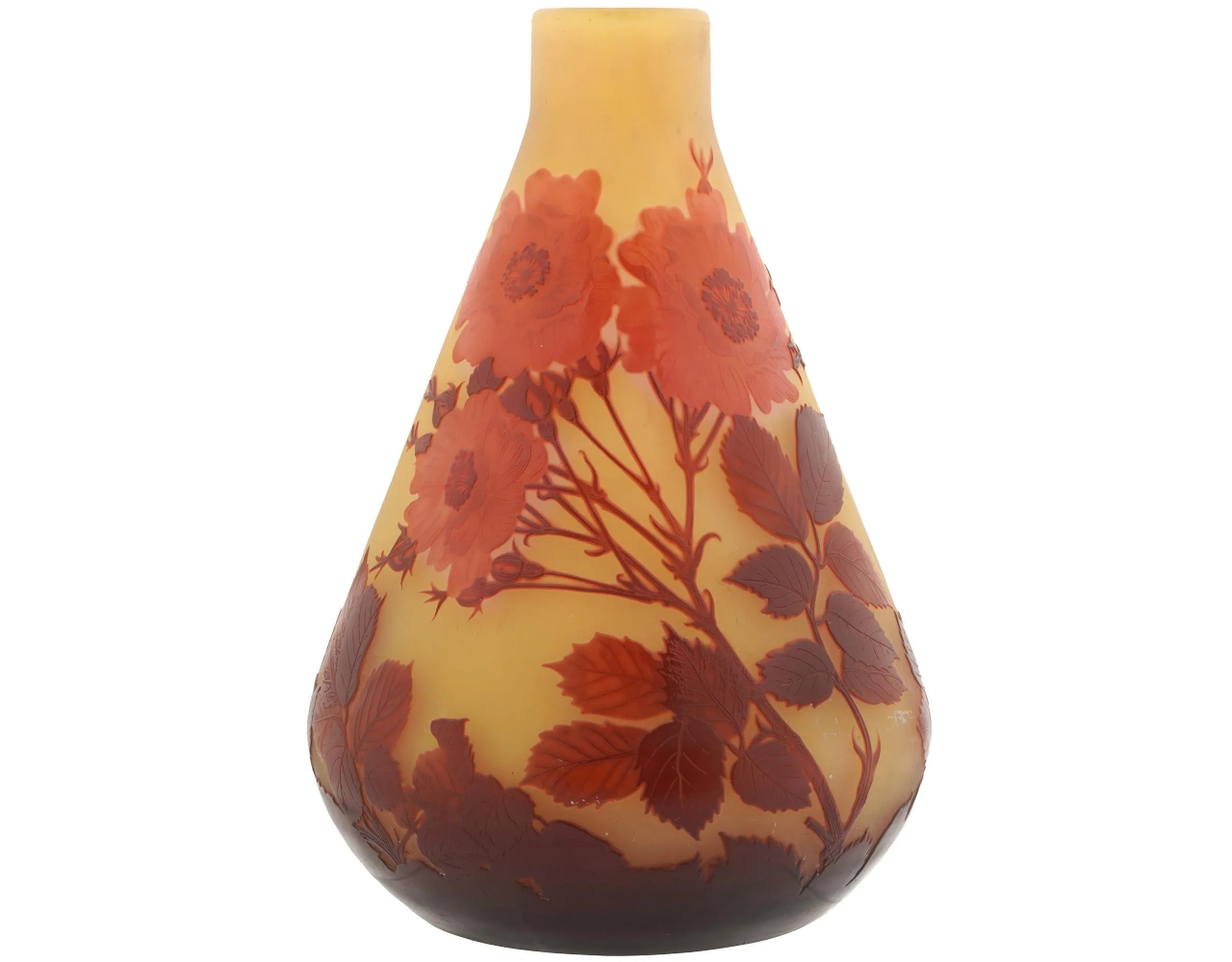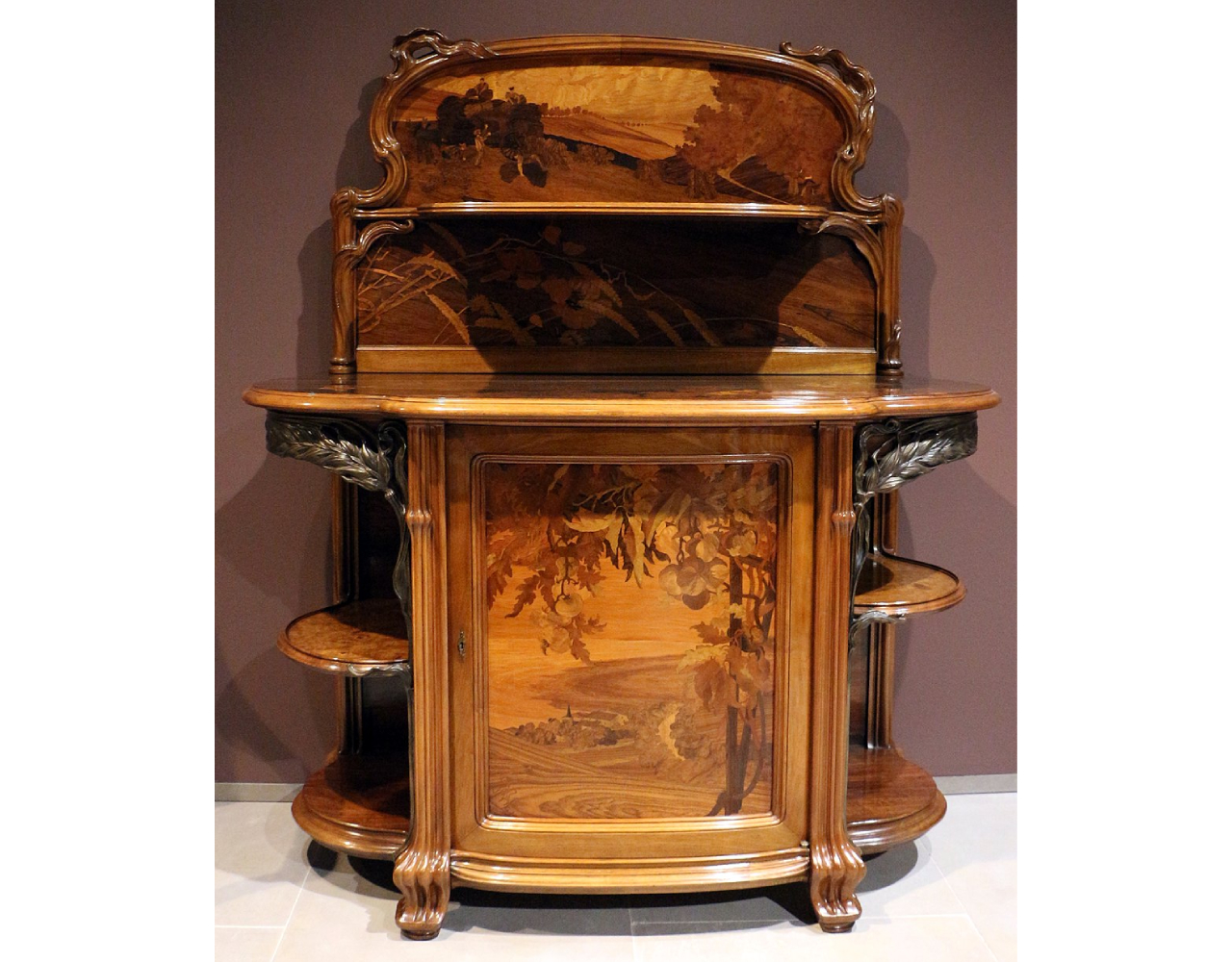Emile Galle was a prominent French artist and designer known for his exquisite glass work, especially associated with the Art Nouveau movement. Born in 1846 in Nancy, France, Galle grew up in a family of artisans and acquired skills in a variety of artistic disciplines, including glassmaking, ceramics and furniture design.
Emile Galle was born in the city of Nancy in northeastern France. After his studies at the Lyceum, where he received a bachelor's degree, Emil went to study batonics, philosophy, mineralogy and German in Weimar. This was followed by training in a glass factory and in the production of earthenware. In 1867 he joined the management of the family glass factory. In the same year, Emile Galle represented his father at the World Exhibition in Paris.
Eight years later, in 1874, he took over the family business. Emil Galle was not only a theorist, but also practically mastered glassblowing, enamel and carpentry.
In 1883 he opened a furniture production in Nancy.
Emile Galle's works were presented at the World Exhibitions of 1878 and 1889 and received Grand Prix and gold medals.
In 1901, together with Victor Prouvé, Louis Majorelle, Antonin Dom and Eugene Valen, they founded the School of Nancy ("Local Association of Industrial Arts"). In the same year, Emile Galle was elected president of the School of Nancy.
Halle's contribution to Art Nouveau glass was innovative. He became famous for his innovative techniques, such as applying multiple layers of colored glass to create intricate patterns and incorporating elements of nature into his creations. His work often features motifs inspired by plants, flowers and insects, reflecting the natural world in an elegant and stylized manner characteristic of the Art Nouveau aesthetic.
Some of his most popular products include:
Cameo Glass: Émile Gallé was famous for his mastery of cameo glass, a technique involving layering different colored glass and then etching or carving away portions to reveal intricate designs. His cameo glass vases, bowls, and lamps often featured nature-inspired motifs such as flowers, foliage, and insects.
Enameled Glass: Gallé also produced enameled glassware, where he applied colored enamel to the surface of the glass to create detailed designs. These pieces showcased his skillful use of vibrant colors and delicate brushwork, often depicting botanical themes and landscapes.
Vases: Gallé's vases are perhaps his most iconic creations, ranging from small delicate bud vases to large, elaborate showpieces. His vases often featured organic forms, flowing lines, and richly detailed surface decorations, making them highly sought after by collectors.

Emile Galle Cameo Glass Vase. 1904. Source:Antiquearena
Lamps: Gallé also designed and produced stunning glass lamps, which combined his artistic vision with functional craftsmanship. These lamps typically featured elaborate bases adorned with botanical or geometric motifs, topped with intricately decorated glass shades that emitted a soft, diffused light.
Furniture: While Gallé was primarily known for his glassware, he also designed furniture pieces that complemented his artistic style. These pieces often incorporated elements of Art Nouveau design, such as curved lines, natural motifs, and decorative inlays. In 1883, Halle opened a workshop in Nancy and revived the technique of wooden typesetting - marquetry.

Emile Galle. Buffet with marquetry and banana leaf ornament (1900). Source: wikipedia
One of Galle's most famous techniques was "marquetry de verre", or glass marquetry, where he layered layers of colored glass to create intricate patterns and images in a single piece. This technique allowed him to achieve amazing depth and detail in his glass work, making his work highly sought after by collectors and fans of Art Nouveau art.
Galle's work had a significant influence on the Art Nouveau movement, not only in glass, but also in other forms of art. His designs combined technical innovation and artistic expression, and his pieces are renowned for their beauty and craftsmanship to this day. Emil Galle managed to create his own original style of decorating glass products, which was later named after him: “Galle style” or “Galle glass”.
Cover image:Emile Galle. Vases.1904. Source: wikipedia


